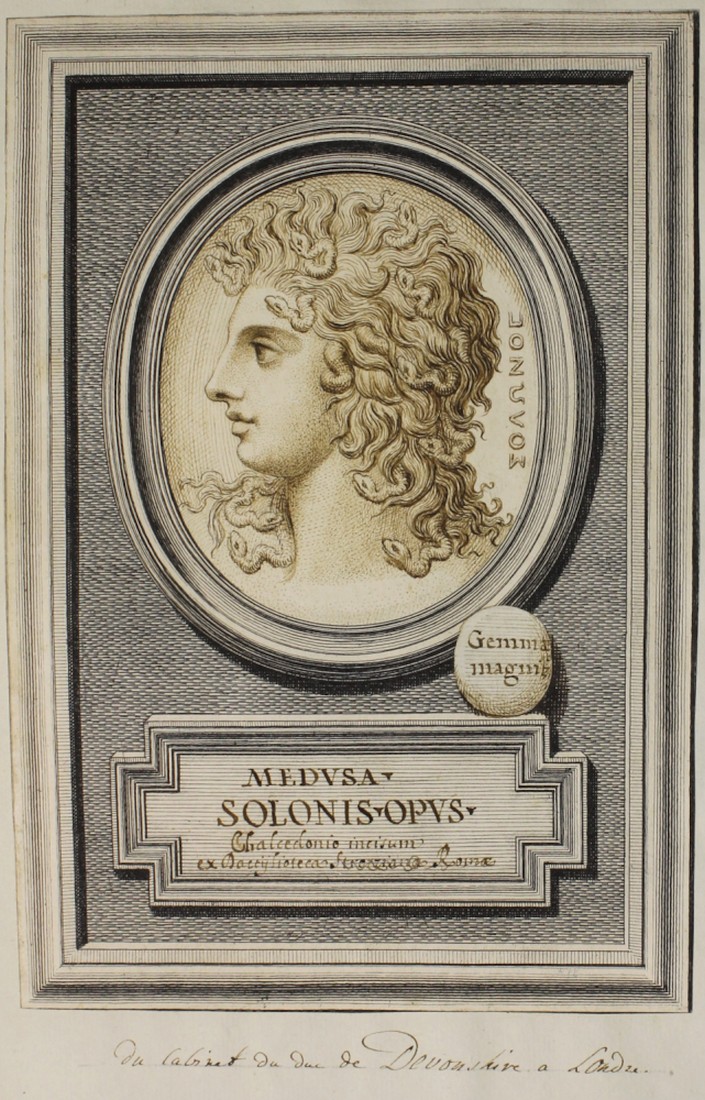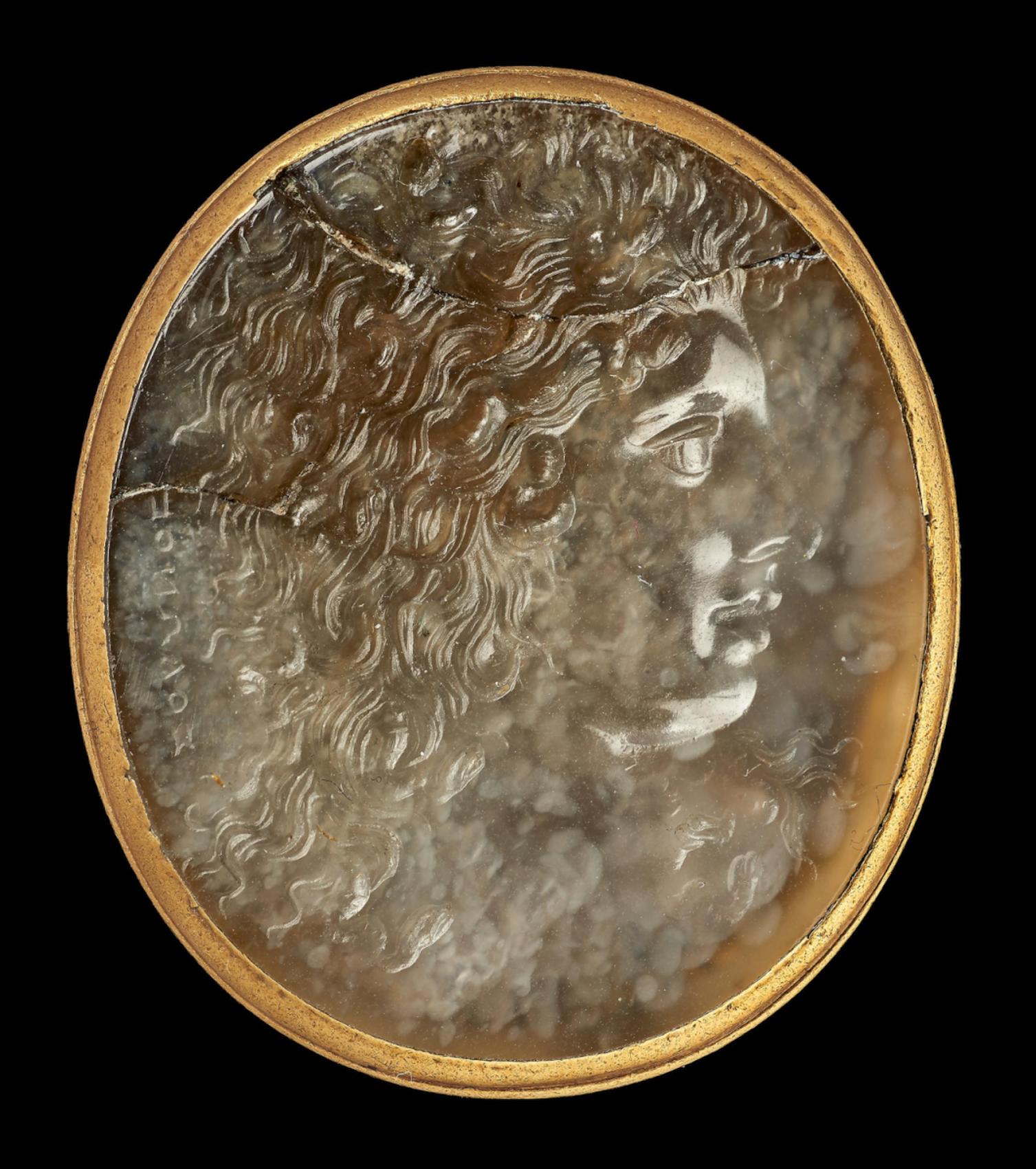Project's overview
Philipp von Stosch (1691-1757) was one of the most instrumental figures of eighteenth-century antiquarianism. His great connoisseurship in terms of glyptic art, coinage, manuscripts, printed books, drawings, prints and other artistic objects was greatly appreciated by his peers, scholars and art patrons, and is reflected in the legacy he left. He is primarily known for his collections, especially the prominent cabinet of engraved gems and glass pastes (now mostly in Antikensammlung Staatliche Museen zu Berlin), and for his outstanding book on gems signed by ancient masters Gemmæ antiquæ cælatæ (Amsterdam, 1724). This book is regarded as a pioneering work not only in the discipline of glyptics but archaeology and art history in general.
The project traces and examines the collecting and scholarly activities of Philipp von Stosch in terms of engraved gems on the basis of the discovered unknown pictorial (drawings) and archival sources. A substantial collection of drawings of gems once belonging to Stosch and now found in the Princes Czartoryski Museum, as well as two smaller but not less significant collections of similar objects. The first once constituted the Spencer-Churchill Album and the second was reused in the six volumes devoted to the Stosch's gems acquired in 1764 by Frederick II the Great, King of Prussia, long considered lost or destroyed, now rediscovered in the Kunstbiliothek - Ornamentstichsammlung in Berlin (more than 3,000 specimens in total). They provide a wonderful opportunity to present Stosch not only as one of the most important representatives of eighteenth-century collecting and antiquarianism, but also to advance our understanding of the emergence of archaeology as a scientific discipline in the eighteenth century.
 The project consists of two phases addressing two kinds of aims - documentary and contextual. In the first one we plan to thoroughly analyse the mentioned collections of drawings and archives, identify original gems they reproduce and evaluate their potential in the studies of ancient glyptic art and history of collecting, as the drawings are accompanied with descriptions that present invaluable information on the interpretations of the scenes depicted on gems and their provenance. This research makes it possible, for instance, to prove that many gems spread across various museum collections in Europe and the USA were once owned by Stosch, went through his hands or were at least documented in his studio.
The project consists of two phases addressing two kinds of aims - documentary and contextual. In the first one we plan to thoroughly analyse the mentioned collections of drawings and archives, identify original gems they reproduce and evaluate their potential in the studies of ancient glyptic art and history of collecting, as the drawings are accompanied with descriptions that present invaluable information on the interpretations of the scenes depicted on gems and their provenance. This research makes it possible, for instance, to prove that many gems spread across various museum collections in Europe and the USA were once owned by Stosch, went through his hands or were at least documented in his studio.
In regard to the second phase and its aim, the drawings and archives will be contextualised in their eighteenth-century environment. Stosch’s wide-ranging activities as a whole, his collection of original gems, pastes, casts, drawings and prints, his library, his book and other scientific projects were intimately connected to his patronage over gem engravers and artists documenting original gems mostly as drawings. As the project shows, Stosch’s aim was to employ the best artists available, including Pier Leone Ghezzi (1674-1755), Hieronymus Odam (ca. 1681-1741), Bernard Picart (1673-1733), Anton Maria Zanetti (1679-1767), Carl Marcus Tuscher (1705-1751), Theodorus Netscher (1661-1728), Georg Martin Preissler (1700-1754), Johann Justus Preissler (1698-1771) and Johann Adam Schweickart (1722-1787), who could faithfully reproduce techniques and styles of ancient gem engravers.
 The recently discovered unknown pictorial and archival materials confirm that, despite some criticism received from his contemporaries, Stosch strove to realise his scientific enterprises through consistent documentation of his cabinet of cameos and intaglios, as well as those from other European collections. Ultimately, some of his ambitious projects, like the supplement to Gemmae antiquae caelatae, were never fully accomplished, while others only partially, such as the catalogue of his gem collection published in 1760 by Johann Joachim Winckelmann (1717-1768) under the title Description des Pierres gravées du feu Baron de Stosch but unillustrated. Still, the main goal of the project is to prove Stosch's unparalleled position as one of the very first "archaeologists" who organised a whole atelier of artists, connoisseurs and mineralogists in his house focussed on systematic documentation of antiquities (mainly intaglios and cameos). That rich visual legacy was meant to reflect history, mythologies and customs of the ancient Egyptians, Etruscans, Greeks and Romans to have been publicly exhibited in Stosch's house-museum.
The recently discovered unknown pictorial and archival materials confirm that, despite some criticism received from his contemporaries, Stosch strove to realise his scientific enterprises through consistent documentation of his cabinet of cameos and intaglios, as well as those from other European collections. Ultimately, some of his ambitious projects, like the supplement to Gemmae antiquae caelatae, were never fully accomplished, while others only partially, such as the catalogue of his gem collection published in 1760 by Johann Joachim Winckelmann (1717-1768) under the title Description des Pierres gravées du feu Baron de Stosch but unillustrated. Still, the main goal of the project is to prove Stosch's unparalleled position as one of the very first "archaeologists" who organised a whole atelier of artists, connoisseurs and mineralogists in his house focussed on systematic documentation of antiquities (mainly intaglios and cameos). That rich visual legacy was meant to reflect history, mythologies and customs of the ancient Egyptians, Etruscans, Greeks and Romans to have been publicly exhibited in Stosch's house-museum.
Publication of the research results and the collection of images in the form of a monumental, two-volume monograph would fulfil Stosch’s vision, albeit two and a half centuries later. All hope of recovering his lost pictorial legacy seemed in vain, yet now, thanks to the discovery of the drawings and archives in the Princes Czartoryski Museum in Krakow, the Kunstbibliothek - Ornamentstichsammlung in berlin and several other smaller sets, it can be brought back to life to the benefit of archaeologists, historians, art historians, curators, collectors and all enthusiasts of ancient engraved gems and eighteenth-century drawings. Moreover, the planned publication will unfold that Stosch’s example illustrates the beginnings of archaeology as a scientific discipline. Although antiquarianism initially concentrated exclusively on collecting antiquities, in the course of the eighteenth century, it started to transform itself into the regular study of ancient societies by asking questions about their ways of functioning and objects those civilisations created. Thus, in the respect of ancient glyptics, Stosch’s role was instrumental and his activities later inspired Winckelmann (his admirer) to write the first (still considered one of the most important in history) synthesis of ancient art (his work Geschichte der Kunst des Alterthums published in 1764).
